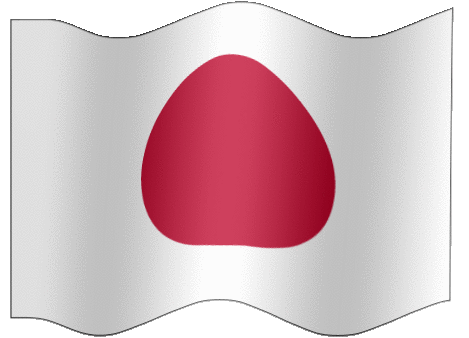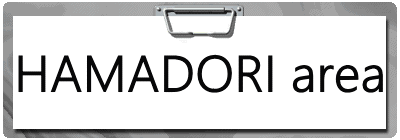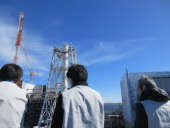 |
 |
 |
Let's be more moved - turn a trip of sights into a trip of feeling!

|
|
|
  |
  |
| Free estimates Free travel consultation |

|
 |
 |
  |
|
|
|
|
|
|
| #07R301 |
|
|
|
|
|
| J VILLAGE |
National trainning center and also a hotel on-site |
|
|

It was opened as Japan's first national soccer training center, but on
March 11, 2011, the Fukushima Daiichi Nuclear Power Plant accident occurred
during the Great East Japan Earthquake. Although there were no casualties
here, due to its proximity to the nuclear power plant, it was designated
an evacuation zone and the government used it as a frontline base for the
nuclear power plant accident. Recovery progressed over time, and it fully
reopened in April 2019. This large facility is a major training center
with eight natural grass pitches, including a stadium with spectator seating,
two artificial turf pitches, a rain practice field, a hotel, a fitness
gym, an arena, a pool, and more. In addition, it is also expected to become
a place where many people gather not only in sports but in various fields.
The hotel is suitable not only for sports groups but also for educational
and training trips, and offers a unique activity menu including a sushi-making
experience (fee required). |
 |
Futaba T. and
Naraha T.
 |
|
|
|
|
|
|
| #07R201 |
|
|
|
|
|
| FUKUSHIMA nuclear Pawer Plant Station |
Nuclear power plant accident site |
|

|

Operation began in 1973, and by 1979, six reactors up to Unit 6 had begun
operation one after the other. In March 2011, Units 1 to 4 suffered successive
core meltdowns and building explosions due to the Great East Japan Earthquake.
As a result, Units 1 to 4 were decommissioned, and Units 5 and 6, which
had suffered relatively little damage as they were undergoing regular inspections,
were also decommissioned in 2014 without being restarted. Decommissioning
work is currently ongoing at all reactors.There are many memorials and
facilities in the surrounding city centre to ensure that the tragic earthquake
and nuclear power plant disaster are never forgotten. |
 |
Futaba T. and
Okuma T.
 |
|
|
|
|
|
|
| #07R401 |
|
|
|
|
|
| NAMIE Yakisoba (stir-fried noodle) |
well-known local gourmet |
|
|
|

It is one of the well-known local gourmet foods. Thick noodles are stir-fried
with bean sprouts and pork, and seasoned with a rich sauce. Many people
eat it with a sprinkling of chili pepper. It once won first place in the
B-1 Grand Prix, a national competition for B-class gourmet food. At the
food court of Roadside Station Namie, there is a famous set of "Namie
yakisoba" and "Shirasu Donburi (rice bowl with whitebait)",
and there is always a line. (The local Ukedo fishing port is famous for
landing whitebait.) |
 |
Namie T.
 |
|
|
|
|
|
|
| #07R202 |
|
|
|
|
|
| OLD CAR CENTER, KUDAN |
like a nursing home for cars |
|
|

This is an automobile museum with the concept of "a nursing home for
cars." Various domestic and foreign automobiles convey the weight
and beauty of the era to visitors. Approximately 80 world-famous and classic
cars from the 1930s to the 1980s are on permanent display. Outside, 12
aircraft, including Lockheed F-104J, Beechcraft B65, Fuji Bell UH-1B, and
helicopters, are installed and exhibited.Open only on Saturdays, Sundays,
and holidays (closed on weekdays) |
 |
Naraha T.
 |
|
|
|
|
|
|
| #07O101 |
|
|
|
|
|
| SHIOYAZAKI Lighthouse |
a large white lighthouse |
|
|

Beautiful white exterior overlooking the Pacific Ocean has led to it being
selected as one of Japan's 50 Best Lighthouses. The surrounding area is
designated as a prefectural natural park, and it is close to a coastline
that is perfect for swimming and marine sports. It is open to the public
(for a fee) as a lighthouse, and you can climb to the top via the stairs.
There is free parking. Near the lighthouse are a monument to the late Misora
Hibari, a popular female singer in Japan (a song played by a sensor),
a monument to her portrait, and a bronze statue. |
 |
Iwaki C.
 |
|
|
|
|
|
|
| #07O102 |
|
|
|
|
|
| Mt. FUTATSUYA |
Futatsuya means two arrows in Japanese |
|
|
|

This mountain was named after the fact that it looks like two arrows. It
is a low mountain with an elevation of 710m, but two prominent rocky peaks,
Mt. Nantai (Mt.Male body) and Mt. Nyotai (Mt. Female body), stand out.
Even in winter, if it is sunny, you can enjoy a thrilling and varied rock
ridge walk under the warm sunshine. It has been worshiped by sailors and
local people since ancient times. |
 |
Iwaki C.
 |
|
|
|
|
|
|
| #07O201 |
|
|
|
|
|
| AQUA MARINE Aquarium |
Marine Science Museum |
|
|
|

Located on a pier in a port facing the Pacific Ocean. It is called the
"Marine Science Museum" and has the elements of a tourist facility
as well as an educational facility. It exhibits about 800 kinds of sea
creatures. It is a large building with a stylish exterior, and there are
many unique exhibits and plenty to see. A world first! Two kinds of coelacanth
specimens are exhibited at the same time (two kinds of coelacanths are
confirmed to live at present: the African "coelacanth" and the
"Indonesian coelacanth"). There is also a fishing spot (for a
fee) and a beach where children can play. It's themes are to protect the
beautiful sea and its creatures. |
 |
Iwaki C.
 |
|
|
|
|
|
|
|
| #07P201 |
|
|
|
|
|
| SOMA NOMAOI |
Wild horses chase festival |
|
|

This is one of Fukushima Prefecture's representative summer festivals,
held on the Saturday, Sunday, and Monday of the last week of May. After
a procession of about 400 mounted warriors, a horse race in traditional
armor and a battle for the sacred flag are held. It is said that the festival
originated when, before the establishment of the Kamakura Shogunate, a
powerful clan leader Taira-no Masakado, let loose wild horses to serve
as enemy soldiers for military training. Many people visit every year to
see up close the heroic figures of mounted warriors dressed in the attire
of the Warring States period galloping through the fields. The second day,
Sunday, is the "main festival," and is the most exciting of the
three days. Note that on this day, you will need a ticket to enter the
venue, "Hibari-ga-hara Festival Grounds." It is said to be the
only Shinto ritual that still retains traces of ancient times, and has
been designated an Important Intangible Folk Cultural Property of Japan. |
 |
Minami Soma C.
 |
|
|
|
|
|
|
| #07P202 |
|
|
|
|
|
| Stone Buddhas of Mt. DAIHIZAN |
Stone Buddhas divided into three locations |
|
|
|

The Stone Buddhas of Daihisan are a collective term for three groups of
stone Buddhas located in caves on the side of a small hill. The well-preserved
stone Buddhas are kept inside a covered building named "Yakushido",
and six Buddha statues are rendered in three dimensions in a cave with
a width of about 15 meters. There is also a stone Buddha with a 9-meter-tall
seated Thousand-Armed Kannon statue at the center, surrounded by numerous
smaller Buddha statues called kebutsu (carved Buddhas) carved into the
walls, but it is not in as good a state of preservation. These stone Buddhas
are said to have been erected in the Heian period, but the historical background
to their construction is unknown, and there is still much mystery surrounding
them. As there are no other groups of stone Buddhas this old and large,
they have been designated a national historic site. |
 |
Minami Soma C.
 |
|
|
|
|
|
|
|
| #07Q101 |
|
|
|
|
|
| MATSUKAWAURA Bay |
Recovering from the damage by the tsunami |
|
|

Matsukawaura is a beautiful lagoon known for its white sand and green pines.
It is separated from the Pacific Ocean by a sandbar. It suffered extensive
damage from the tsunami caused by the Great East Japan Earthquake on March
11, 2011, but is now slowly returning to its pre-disaster appearance. Hotels
for tourists are gradually reopening or newly opening. The reconstruction
public market "Hamanoeki (Beachside Station) Matsukawaura" opened
near the sea sells fresh seafood caught in Soma, as well as local agricultural
products, processed foods, and souvenirs. At the food court, you can enjoy
dishes made with seasonal local seafood and agricultural products. |
 |
Soma C.
 |
|
|
|
|
|
|
|
|
|
|
|
|
|
|
|
|
|
|
|
|
|
|
|
|
|
|
|
|
|
|
|



